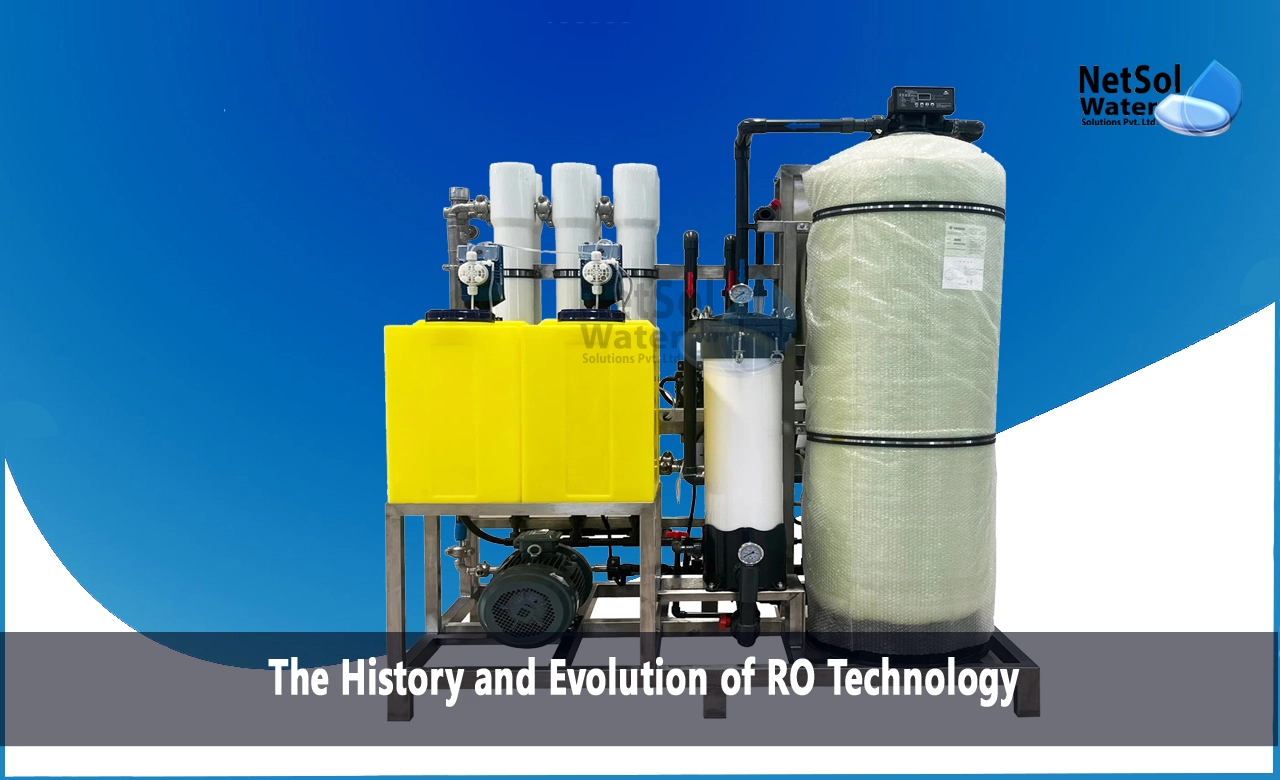What is the History and Evolution of RO Technology?
Reverse osmosis (RO) is a water purification process that removes contaminants using pressure to force water through a selectively permeable membrane. Today, RO is used for everything from large-scale desalination to residential water filtration.
RO technology has come a long way over nearly 70 years of development. Let's explore the fascinating history and evolution of reverse osmosis systems.
The Discovery of Reverse Osmosis
Osmosis is the natural movement of solvent (usually water) from a dilute solution to a concentrated solution across a permeable membrane. This equalizes solute concentrations on each side.
In the 1950s, researchers wondered if applying external pressure could reverse this osmotic process - forcing pure solvent from the concentrated side to the dilute side - to purify water.
Early RO Experimentation
In 1952, researchers at the University of California successfully demonstrated reverse osmosis through a nitrocellulose membrane. However, water fluxes were low, taking days to produce a few milliliters of water.
Early spirally wound cellulose acetate membranes developed in the late 1950s increased water diffusion rates. Despite low salt rejection, these membranes generated interest in RO.
Emerging Applications of RO
The Office of Saline Water (OSW) was established in the 1950s to research desalination to augment fresh water supplies. This led to major advances in membrane technology.
By using tighter spiral-wound membranes and applied pressure, researchers achieved flow rates of 0.7 gallons per square foot of membrane area per day - the first practical fluxes for desalination.
RO Gains Commercial Appeal
In the 1960s, Du Pont introduced thin-film composite membranes made of nylon that were more durable and had better rejection rates than cellulose acetate. This enabled large-scale commercial RO systems.
One of the first major RO desalination plants opened in 1965 in Coalinga, California, which had a very salty local water supply. The mineralized water was rendered drinkable via RO.
Boom Years of RO Development
The 1970s saw major leaps in RO system efficiency and falling costs thanks to advanced membrane engineering. Nearly 400 desalination plants opened worldwide in just four years.
RO became the leading desalination method. Besides seawater, RO systems treated challenging wastewater from industrial processes. RO was the best solution available.
Maturation & Refinement of RO Technology
By the 1980s, RO system energy requirements and polymer costs had rapidly declined. RO became cost-competitive with other processes like distillation.
Manufacturers introduced larger, more productive membrane elements and improved module engineering. This expanded applications for RO.
The Home RO Water Filter is Born
In the 1970s, RO systems became compact and affordable enough for under-sink installation in homes to treat tap water. Home RO units provided cleaner drinking and cooking water.
Demand grew in the 1980s and 1990s for home RO systems and bottled water as awareness of water pollution increased. RO offered protection from emerging contaminants.
Modern Home & Commercial Uses
Today, reverse osmosis is the leading water purification process globally. Uses include:
- Municipal water treatment
- Food & beverage production
- Pharmaceutical manufacturing
- Semiconductor fabrication
- Hospital water supplies
- Residential drinking water
Advanced membrane technology can reject over 99% of dissolved salts, organic molecules and inorganic compounds, as well as microorganisms.
Future Innovations in RO Systems
Ongoing RO research aims to:
- Improve energy efficiency
- Develop more durable membranes
- Enhance selective contaminant rejection
- Enable use of renewable energy
- Lower system costs
- Allow in-situ membrane cleaning
These innovations will expand RO applications in sustainable water production, food processing, industrial wastewater treatment and seawater desalination well into the future.
The Last 70 Years of Progress
What began as a novel idea in the lab is now an essential water treatment technology worldwide. While the core principles remain the same, reverse osmosis systems have come an incredibly long way thanks to many incremental advances over decades.
Driven by human ingenuity, RO technology has continually adapted to meet evolving needs and water challenges. The future is bright for smarter, greener RO systems building on this legacy of innovation.




